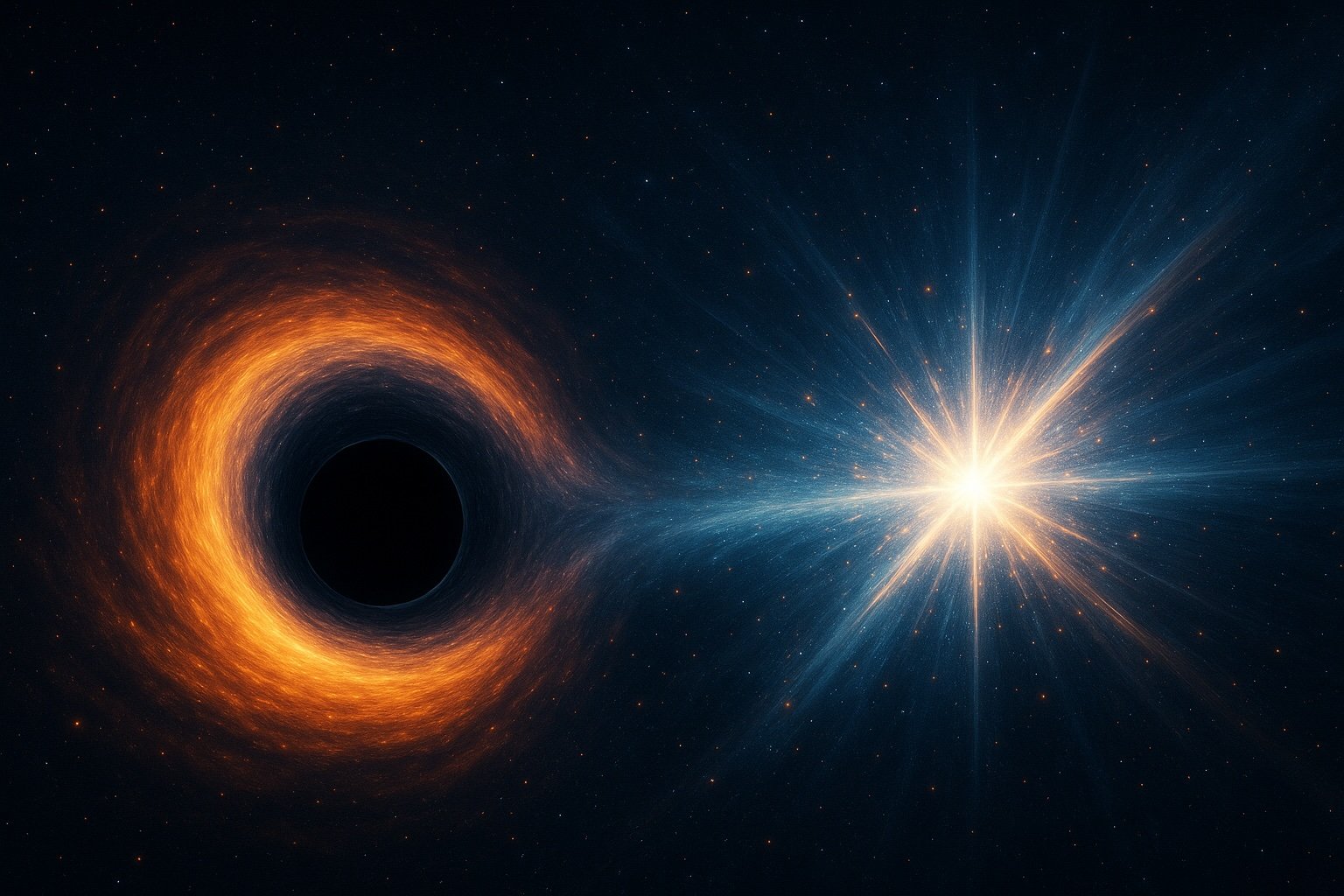Black holes are some of the most fascinating and feared objects in the universe. They’re places where gravity is so strong, not even light can escape. But as far as we know, they’re also not the end of the story.
A question that has puzzled scientists and dreamers alike is this: What’s on the other side of a black hole? Is there anything beyond it? Or is it just… nothing?
Let’s unpack what science has discovered so far—and what it still doesn’t know.
What Happens Inside a Black Hole?
The traditional understanding, based on Einstein’s general theory of relativity, says that when a massive star collapses, it forms a black hole with a core so dense it becomes a singularity—an infinitely small point where gravity crushes all matter and space-time itself breaks down. Anything that crosses the event horizon, the boundary around the black hole, is gone forever.
But here’s the catch: at the singularity, the known laws of physics stop working. That means scientists need something more—something that blends gravity with quantum mechanics.
The Loop Quantum Gravity Alternative
One of the most intriguing alternatives comes from a theory called Loop Quantum Gravity (LQG). Developed by physicists including Carlo Rovelli, this framework tries to bridge general relativity with quantum mechanics—two pillars of modern physics that don’t normally get along.
In LQG, space-time isn’t smooth and continuous. Instead, it’s made up of tiny loops—sort of like atoms of space. Under extreme conditions, like those inside a black hole, this quantum nature of space could become important.
According to this idea, gravity doesn’t crush everything into a singularity. Instead, it reaches a limit, then rebounds. Matter doesn’t vanish—it bounces back. In this scenario, the black hole transforms into something else: a white hole.
A white hole is essentially the reverse of a black hole. Instead of pulling everything in, it pushes everything out. It’s a strange idea, but one that might resolve a longstanding mystery in physics: what happens to information that falls into a black hole?
White Holes: Science or Speculation?
Here’s where we need to be cautious. While the idea of a black hole turning into a white hole is mathematically possible in LQG, there’s no experimental evidence for it. No white holes have ever been observed. No black holes have been seen “bouncing.” These remain theoretical constructs—fascinating, but unproven.
🔬 Subscribe to SciMail
Get the latest science discoveries straight to your inbox!
There are also other competing ideas out there. Some physicists believe that black holes slowly evaporate over time through a process called Hawking radiation, losing mass until they vanish completely. Others have proposed more radical solutions, like the “firewall” hypothesis, which suggests that information gets destroyed at the edge of the event horizon. Some string theorists argue that information is preserved on the surface of the black hole itself, never truly lost.
In short, no one agrees on a final answer yet.
The Time Problem
Even if the bounce theory is correct, there’s another major hurdle: time. According to some estimates, the bounce from black hole to white hole could take trillions of years. That’s far beyond the lifespan of the universe as we currently understand it. So even if white holes exist, we’d never see one form—at least not any time soon.
So What’s Really on the Other Side?
The honest answer is: we don’t know.
The idea of wormholes, alternate universes, or tunnels through space-time makes for great science fiction—but we have no evidence any of it is real. What scientists are really focused on is the question of information: is it lost forever inside a black hole, or can it escape somehow?
That question has huge implications for how we understand the universe and the laws that govern it.
Final Thoughts
It’s tempting to imagine black holes as cosmic gateways—doorways to other dimensions or beginnings of new universes. And maybe, one day, we’ll have the tools and theories to know for sure.
For now, theories like Loop Quantum Gravity offer exciting possibilities, but they still need experimental backing. Until then, what lies on the other side of a black hole remains one of the biggest unanswered questions in science—and one of the most beautiful mysteries the cosmos has to offer.


Leave a Reply